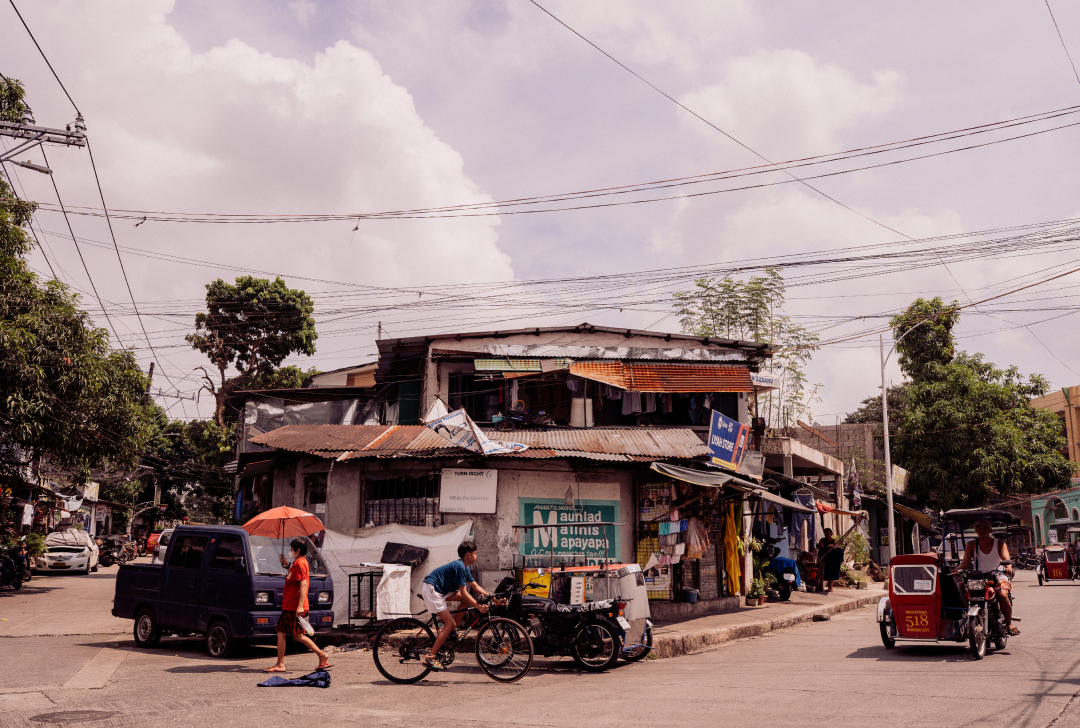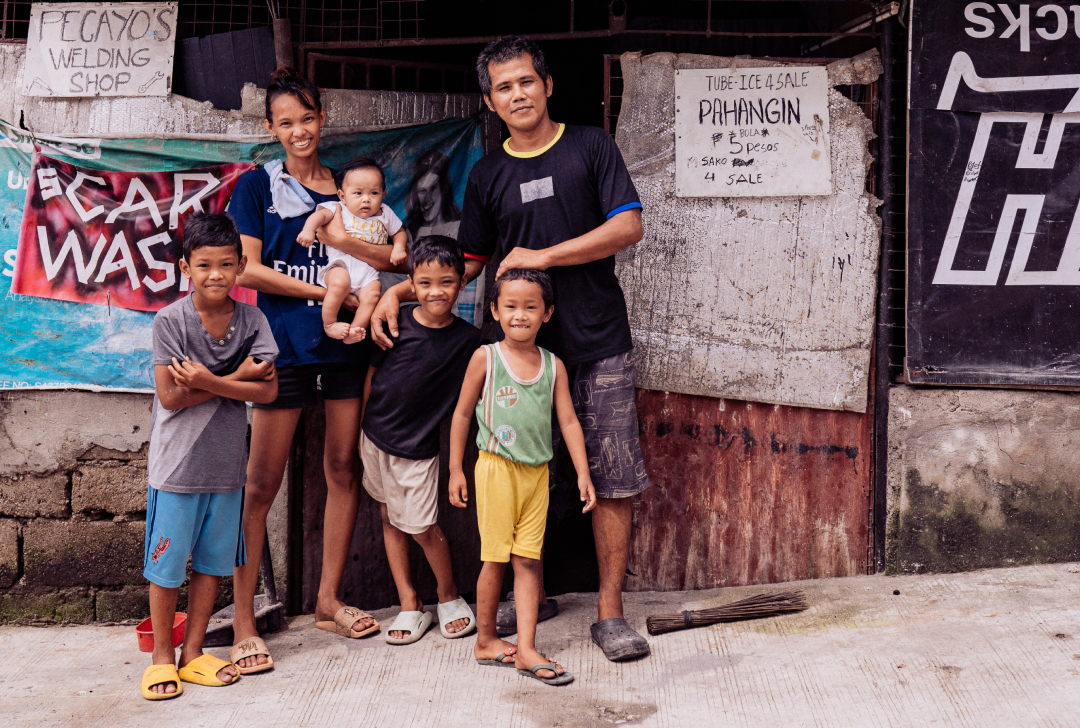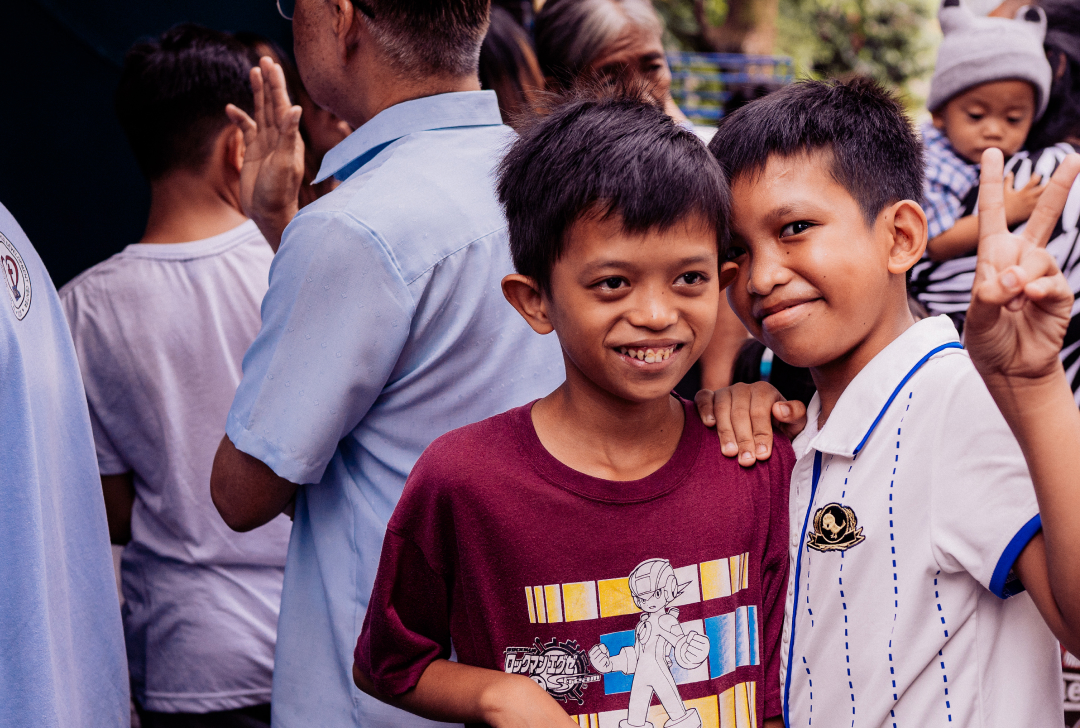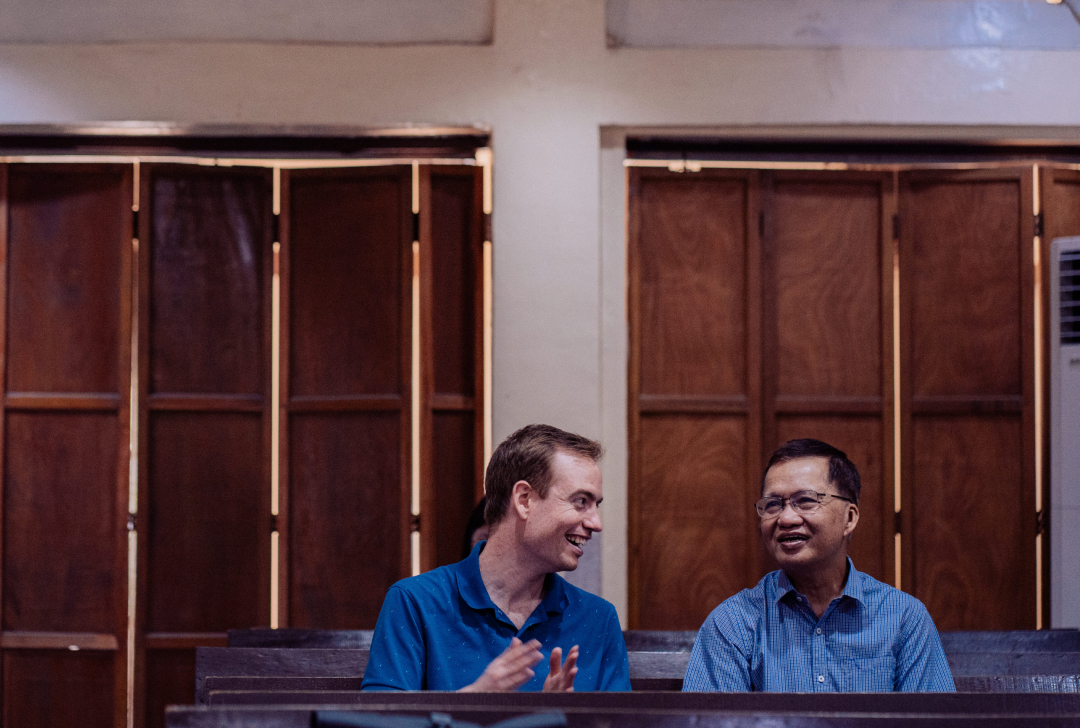In September 2024, a team of six Australians flew into Manila to meet Joy, her family and her neighbourhood and hear their incredible stories.
23 Apr, 2024
This article is part of a series on the Blessed in Christ Church neighbourhood in Metro Manila, the Philippines. You can also read The Miracle Child: Joy’s Story, Blessed in Christ by Grace: David’s Story and Never Forsaken: Vicky’s Story.
I stood on a suburban Sydney street corner, feet in lush green grass, under the shade of a tree. There was no one around and, other than a few birds chirping in the distance, it was quiet. I felt uncomfortable. Wary.
It was home, and yet it didn’t feel right.
In September 2024, a small team from Compassion Australia travelled to Metro Manila in the Philippines to capture the story of a young woman named Joy, her family and her neighbourhood. Led by Film Lead Daniel, the team included Film Specialists Marcus and Kevin, Designer Mylan, Photographer Jake and Communications Lead Andrew (that’s me). On the ground we were supported by local Compassion Photojournalist Edwin and Trips & Visits Specialist Kith.

Unlike Sydney, Metro Manila is never quiet. People, animals and cars are everywhere at all hours and there’s no grass or trees in sight. But it also felt like a traditional neighbourhood. People stopped to talk to one another, they sat outside their homes and waved, and children were running and around and playing everywhere. There was a warmth, friendliness and familiarity unlike Australian cities.
We spent a little over a week there, first getting to know Joy, her family, the staff and volunteers at the local Compassion centre and members of the church. After that we filmed, took photos and interviewed.
You can’t help but come back changed by a trip like this. Here’s how the experience made an impact in the lives of our team:
What was your favourite moment from the trip?
Daniel: “I enjoyed getting to know Edison, Joy’s father, and seeing him around his family. I would sometimes notice him standing in the background as we busied ourselves with filming, watching on with a gentle smile, proud to welcome us into his home, proud to tell people of the goodness of God in his own life and that of his family’s. He is a man of few words, a quiet steadfastness anchored in a tried and tested faith.”

Mylan: “We often made some little friends in Joy’s neighbourhood as we went on photo walks, these two little boys had been following us around and giggling for the cameras. As we walked back to the main path where the rest of the team were, I realised we had stopped in front of the boys’ home, as their beautiful mother emerged with their baby sister.
“As I called Jake [our photographer] over, we asked through the translator (with consent) if we could take a family portrait in front of their home. The two boys, their mother, baby sister and father stood happily and proudly in front of their home. Jake and I were able to print a polaroid version for them and I felt moved to tears when we found out, through the translator, that this was the first family photo they’d ever had taken.”
What was one of the most difficult things you experienced?
Daniel: “It was challenging to once again be undone by the complexity of poverty. Joy and her family by outside appearance seem to be doing okay, they have weathered the harsher effects of poverty. They have concrete walls, beds, a stove and even a motorbike, but all this still doesn’t mean they can stop working multiple jobs late into the night, it doesn’t mean they can rely on the power staying on, it doesn’t mean that the entrance to their home doesn’t flood or the roof leak when it rains.”
“Poverty isn’t in and out, it has many steps in between, a gradual and often precarious journey.”

Mylan: “I realised that I had only seen rural poverty in person once we were walking through the urban slums nearby the local church. The slum seemed to be on top of an open creek and sewerage, and the condensed, highly populated environment felt different to anything I’ve ever seen. The disparity of living standards, and to witness how low the standard of living is, even for the middle-class, compared to our opportunities in Australia.”
What were some of the challenges when filming?
Marcus: “In the Philippines, families are so tightly knit.
“The story we are trying to tell in the films we are making are shared by so many people. The parents, the siblings, church pastor, Compassion staff members and church members.”
“The challenge we have is working out who to interview and have contribute to this story. We want to give justice to this story, and we want to be authentic about the challenges that poverty presents to the people in this community. We also want to portray the people we have met with depth, character and go beyond basic stereotypes around people living in poverty. Our challenge is in editing and telling this story to supporters of Compassion in a way that honours the wholeness of the people we met on this trip.”
Kevin: “The heat and humidity. We had to turn off the fans and air-conditioning in some places to get clean audio, but that also meant that the room got quite hot and finding a suitable location for each scene that is going to be quiet too. But this is part of what we must do to get the best result, because the audience only hears what’s in the frame of the film.”
What was something that inspired you?
Marcus: “I was inspired by how community minded the neighbourhoods were in The Philippines. In Australia, our front yards are shrinking and our backyards are growing. In the neighbourhood we filmed in, people had karaoke machines in the street, kids were playing basketball and people were sitting at the front of their houses waving hello. Amid their material poverty, they had such rich community and relationships.”

Kevin: “Seeing the satellite church that the family and community attend operates out of a small, garage with no windows and only a few fans was one of the many things that inspired me.”
“The conditions were hot and humid, yet people from all over still come together, wanting to still be involved, wanting to still be a part of what God is doing.”
“This inspires me because it shows the level of faith and resilience that this community has despite the conditions that their church is in. They just want to worship God and be thankful for everything that they have, and so this inspires me to be thankful for what I have and for me to praise and worship God no matter what.
In total, we filmed six interviews, took almost 20 hours of footage and hundreds of photos, wrote four articles and five poems, and generated at least a month’s worth of social media posts. This is all content Compassion Australia will use for years to come.

For me, when I stood on that street corner back home in Australia, there was a sense of loss of the community I had felt over the previous week—one that I had been welcomed into so warmly.
I was reminded once again that though they may live in material poverty, they are rich in faith (James 2:5).
We saw firsthand the incredible servant hearts of the local Compassion staff and volunteers, going above and beyond to care for children in Jesus’ name. No matter their own sacrifices and achievements, they are quick to give glory to God—every single time.
There is so much to learn in the global Compassion neighbourhood. If you haven’t joined it yet, let me invite you to do so today.
Memories Made
There are memories made
when we meet:
awkward laughter,
warm smiles,
hands held in greeting.
Moments that grow
with each sunrise
until they flourish into
humble hearts
and eyes open to God’s goodness.
But with every sunset
we share an unspoken knowing
that time is ticking towards
a moment when memories
will be all we have left.
There are memories made
when we part:
lingering embraces,
tears shed,
blessings given.
But memories remain
long after oceans are crossed,
binding us together
and making broken hearts
whole.
Written by Andrew Barker, Compassion Australia.

Answer Hunger With Hope
238 million of your global neighbours are facing a food crisis and urgently need your support.
Find out more.
